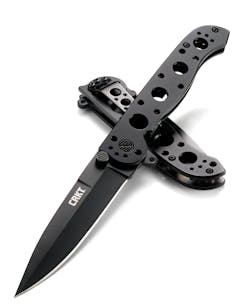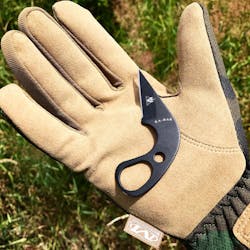There are many uses for knives, especially in law enforcement. They can be used as a rescue tool, in a utility aspect to cut something open or carried as a last-ditch defensive tool. The quality of knives has improved dramatically from prior years, too. It may be time to take a second look at the knives available on the market today.
Improvements in the product
Today’s needed features
Create a policy and train
Thomas Benge, former sergeant and current master trainer with Cutting Edge Training believes almost all law enforcement officers in the U.S. carry at least one knife, yet not every agency ensures its officers know how to use it. “Each agency has its own unique knife policy, or lack thereof,” he says. “Even if you don’t have an ‘official’ knife policy, if everyone in your agency is carrying one and you know about it, then you have a knife policy, whether it’s formal or not.”
Benge typically sees the knife being employed primarily in one situation—when an officer is losing his or her weapon. “For police officers, the knife acts as a backup. If their gun is taken or lost, the knife is another option for responding with deadly force,” he says. “In all of the surveys we have taken in 18 years, when we ask the guys why they carry a knife, it’s always last ditch defense. Even if an officer tells you they carry a knife for rescue or utility purposes, in reality they are carrying it for defensive backup.”
The problem arises, however, when an agency has no official policy and no official knife training. “When it comes to knife training, it’s the tail wagging the dog a little bit,” says Benge. “In our training we see officers sometimes coming on their own or an agency will send an officer to check out the training, after they already have the knives, of course. A lot of agencies don’t know where knives even fit.” Law enforcement officers should be trained on all equipment they carry, especially on tools they may use in a deadly force scenario.
In an 8 hour end user course, Cutting Edge Training spends an hour on rescue and utility and the rest of the time is spent on the defensive use and the justification for the defensive use of the knife.
“When a police officer shoots someone with their firearm, it’s a big deal to the community and agency and people have a lot of questions,” says Benge. “But the thing is, the public sees it as an acceptable weapon. Most people think of the knife as a criminal’s weapon so now if we have an officer using a knife in a deadly force scenario, most people’s reaction is, Wow what’s going on?”
When it comes to using a knife in defense, LEOs always have to talk about the context under which the force was employed. “I ask my students to imagine that they respond to the scene of a crime, and there is a body laying there with 14 stab wounds. Almost all of the LEOs I train would think somebody lost their mind, they raged out and this was the result. Well, then I ask them, What are people going to think when you as a LEO use your knife and end up stabbing someone 15, 16 or 17 times? In addition to training how to use a knife, you have to be trained to justify the defensive use of the tool, too.”
Benge recommends agencies adopt a policy that specifies the types of knives that can be carried under certain circumstances and how the department is authorizing its usage, as well as training with the equipment.
About the Author

Adrienne Zimmer
Editor
Adrienne Zimmer was the Editor of Law Enforcement Technology magazine, a monthly business-to-business publication that covers technology trends and best practices for public safety managers from 2017 to 2019. LET is part of Officer Media Group, which also publishes Law Enforcement Product News and Officer.com. Adrienne has been in publishing since 2013.


